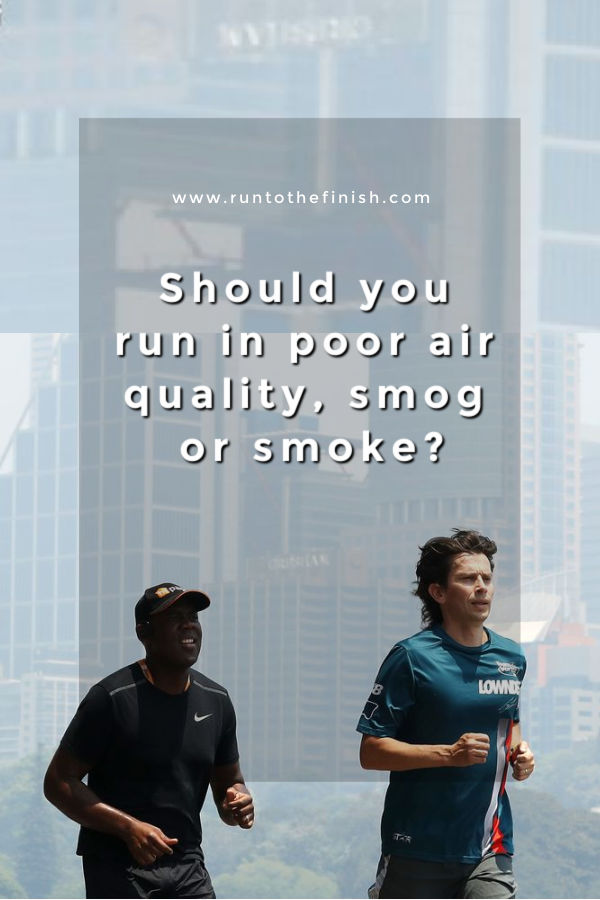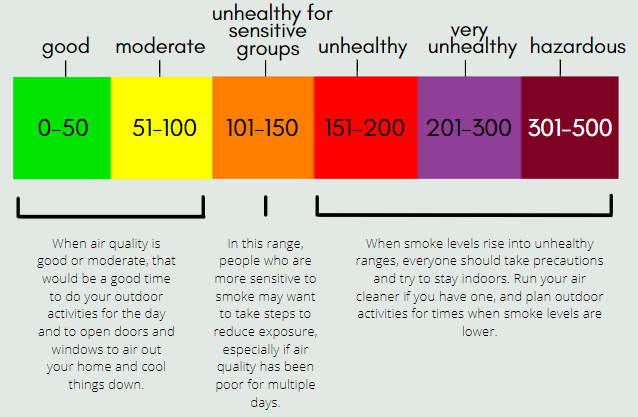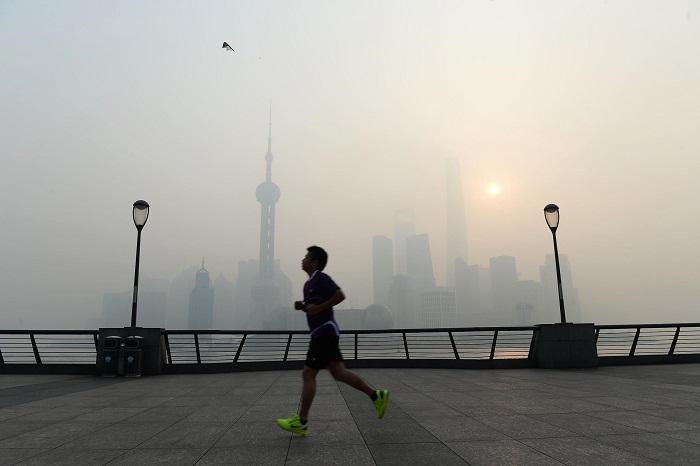Running in Bad Air Quality And Smoke from Fires
Running in bad air quality and smoke from fires can harm your respiratory system. Protect your health by avoiding outdoor exercise in polluted environments.
Exercising in hazardous air quality can lead to adverse health effects, including respiratory issues and aggravation of existing conditions. It is crucial to stay informed about air quality levels in your area and adjust your workout routine accordingly. Inhaling smoke particles can be particularly dangerous during wildfires, as they contain harmful substances that can cause long-term health complications.
By being mindful of the air quality and taking necessary precautions, you can continue to stay active while minimizing the risks associated with exercising in smoky conditions.

Credit: www.pbs.org
Understanding The Risks
Health Implications
Running in bad air quality and smoke from fires poses serious health risks. Exposure to air pollutants can lead to respiratory issues such as coughing, wheezing, and shortness of breath. Additionally, long-term exposure can increase the risk of developing chronic respiratory conditions such as asthma and bronchitis. Particulate matter in the air can also penetrate deep into the lungs, causing inflammation and potential damage to lung tissue.
Effects On Performance
Poor air quality can significantly impact athletic performance. Inhaling high concentrations of pollutants can reduce oxygen delivery to the muscles, leading to decreased endurance and increased fatigue. Moreover, the body has to work harder to breathe in polluted air, which can result in decreased efficiency and performance. Athletes may experience decreased lung function and overall diminished exercise capacity when running in unhealthy air quality and smoke-filled environments.
Preparing To Run In Bad Air Quality
Monitoring Air Quality Index
Air Quality Index (AQI) provides real-time information about air pollution levels.
Choosing The Right Time And Place
Identify lower pollution areas and run when pollution levels are typically lower.
Protecting Yourself While Running
When running in areas with bad air quality or smoke from fires, it’s crucial to protect yourself while engaging in physical activity. Here are some essential tips for safely running in such conditions:
Wearing Appropriate Gear
- Wear a properly fitting mask designed for filtering out harmful particles.
- Choose light-colored, moisture-wicking clothing to stay cool and visible.
- Don protective eyewear to shield your eyes from irritants.
Using Respiratory Protection
- Invest in a high-quality respirator or N95 mask for effective filtration.
- Make sure the mask seals properly to prevent inhaling harmful substances.
- Consider adjusting your running route to avoid the most affected areas.

Credit: www.runtothefinish.com
Modifying Your Running Routine
When air quality and smoke from fires create hazardous conditions, it’s important to adapt your running routine to prioritize your health and safety. Making alterations to your running habits can help minimize the potential risks associated with exercising in poor air quality. By modifying the duration and intensity of your runs, you can continue to stay active while reducing your exposure to harmful pollutants.
Shortening The Duration
If you typically go for longer runs, consider shortening the duration of your workouts during periods of bad air quality. Reducing the time spent exercising outdoors can limit your inhalation of smoke and pollutants, lowering the potential impact on your respiratory system. Instead of long runs, opt for shorter, more frequent sessions to minimize your exposure while still maintaining your overall fitness level.
Reducing Intensity
When air quality is poor, it’s essential to reduce the intensity of your runs to lessen the strain on your lungs and heart. Lowering the pace and avoiding high-intensity exercises can help prevent overexertion in challenging conditions. By prioritizing lower-intensity workouts, you can still engage in physical activity without putting additional stress on your respiratory system and exacerbating any potential health issues.
Alternative Indoor Workouts
When the air quality is poor due to smoke from fires, it is important to prioritize our health and safety. However, this doesn’t mean you have to skip your regular workouts. There are plenty of alternative indoor exercises that can keep you active and fit even when the air outside is not ideal. In this article, we will explore some indoor cardio exercises and strength training routines that you can try to maintain your fitness goals.
Indoor Cardio Exercises
When it comes to indoor cardio workouts, there are various options that you can choose from. These exercises not only help in burning calories but also improve cardiovascular endurance and lung capacity. Here are some cardio exercises you can do indoors:
- Jumping Jacks: Jumping jacks are a great way to get your heart rate up. Start with your feet together and hands by your sides, then jump your feet out to the sides and raise your arms above your head. Repeat for a certain number of repetitions.
- High Knees: While standing in place, lift your knees as high as possible one at a time, as if you are running in place. Pump your arms to add intensity. Aim for 30-60 seconds of high knees.
- Skipping Rope: If you have a skipping rope, it can provide an excellent cardio workout. Start by jumping over the rope with both feet, and gradually increase your speed and intensity.
- Dancing: Turn up the music and dance your heart out. Dancing not only boosts your heart rate but also elevates your mood and helps relieve stress.
- Stair Climbing: If you have access to a staircase, use it for a challenging cardio workout. Run or walk up and down the stairs repeatedly.
Strength Training
Strength training exercises are essential for building and maintaining muscle mass, as well as improving bone density. Even without access to a gym or weights, you can still perform effective strength training workouts using your body weight. Here are some exercises you can try:
- Push-ups: Start in a plank position with your hands slightly wider than shoulder-width apart. Lower your chest towards the floor by bending your elbows, then push back up to the starting position. Repeat for the desired number of reps.
- Squats: Stand with your feet hip-width apart and lower down as if sitting back into an imaginary chair. Keep your knees behind your toes and push through your heels to stand back up.
- Lunges: Take a step forward with your right foot and lower your body until your right thigh is parallel to the floor, and your right shin is vertical. Push back up to the starting position and repeat with the left leg.
- Plank: Start in a push-up position and lower your forearms to the ground. Engage your core and hold this position for as long as you can without compromising your form.
- Mountain Climbers: Begin in a high plank position, then alternate bringing each knee towards your chest as if you are running. Keep your core engaged and maintain a steady pace.
Remember to warm up properly before starting any workout and cool down afterwards. Stay hydrated and listen to your body. These alternative indoor exercises will not only help you maintain your fitness level but also keep you motivated and energized during times when outdoor workouts may not be feasible. Keep moving, stay safe, and prioritize your health!

Credit: www.airnow.gov
Frequently Asked Questions For Running In Bad Air Quality And Smoke From Fires
Can Running In Bad Air Quality And Smoke From Fires Affect Your Health?
Running in bad air quality and smoke from fires can have detrimental effects on your health. Inhaling polluted air increases the risk of respiratory problems, aggravates existing conditions, and can even lead to long-term health issues.
What Are The Potential Dangers Of Running In Smoke-filled Areas?
Running in smoke-filled areas can expose you to harmful pollutants and particles, such as fine particulate matter and carbon monoxide. This can result in irritation of the respiratory system, shortness of breath, and increased risk of lung infections.
How Can You Protect Yourself When Running In Areas With Poor Air Quality From Fires?
To protect yourself when running in areas with poor air quality from fires, it is advisable to check air quality indexes and local advisories. If the air quality is hazardous, it is best to avoid outdoor activities, including running, until conditions improve.
If you still decide to run, consider wearing a well-fitted mask designed to filter out fine particles and pollutants.
Conclusion
In light of the adverse health effects of running in bad air quality and smoke from fires, it’s essential to prioritize safety by staying informed about local air quality conditions. Consider indoor exercise alternatives when the air quality is poor to protect your respiratory health.
Stay vigilant and take proactive measures to stay healthy.






